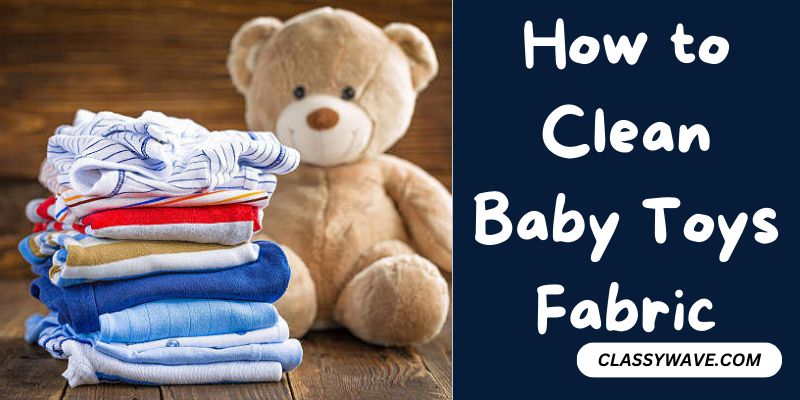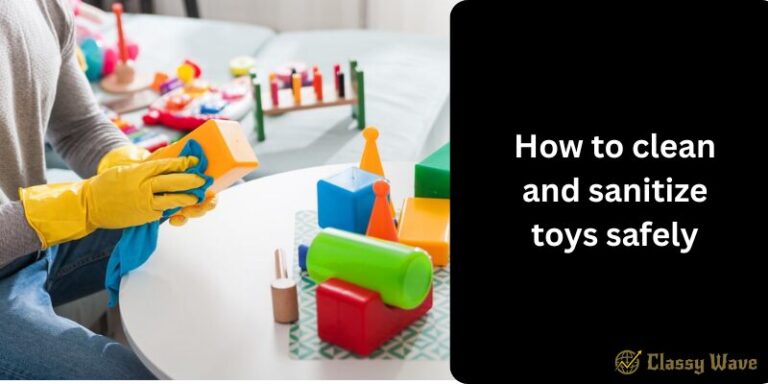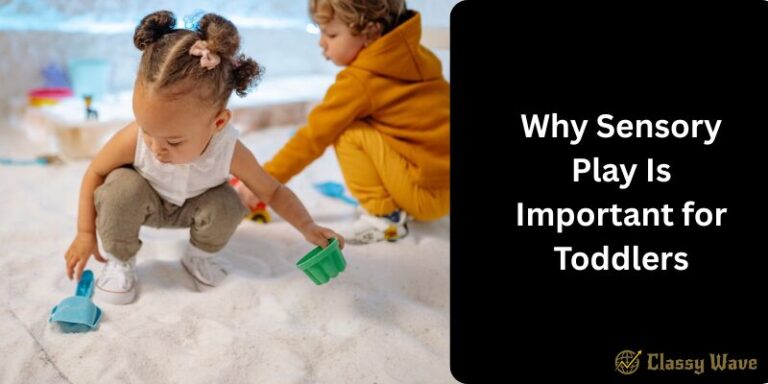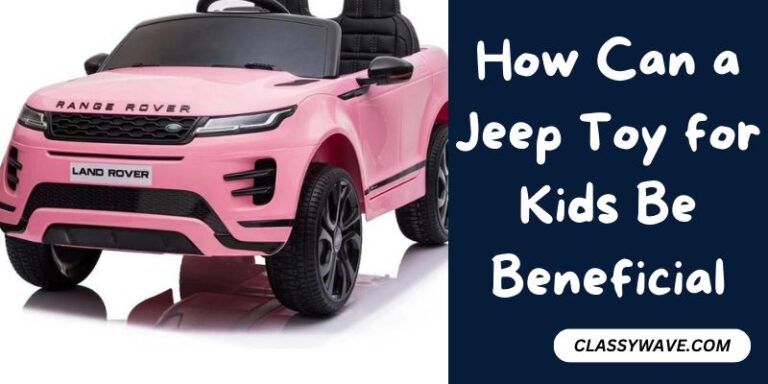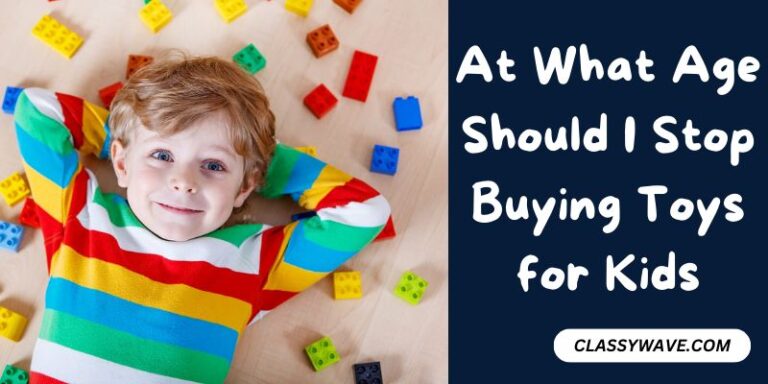How to Clean Baby Toys Fabric – Keeping it Safe and Clean
Babies, with their boundless curiosity and penchant for exploration, have an extraordinary talent for transforming seemingly innocent toys into veritable germ hotspots. The importance of maintaining the cleanliness of baby toys, particularly those crafted from fabric, extends far beyond mere aesthetics—it is a matter of paramount significance for the overall health and well-being of your precious little one. In the following guide, we will not only navigate the landscape of effective cleaning methods for fabric baby toys but also empower you with the assurance that your baby’s cherished playthings are not just visually spotless but also hygienically pristine.
As we embark on this journey, we recognize that the realm of baby care is as dynamic as it is rewarding. The goal is not merely to achieve cleanliness but to foster an environment where your baby can thrive, explore, and play without unnecessary health risks. Join us as we unveil insights into maintaining the cleanliness of your baby’s fabric toys, creating a safe and enjoyable space for your bundle of joy.
Why Clean Baby Toys?
Before we dive into the nitty-gritty of cleaning fabric toys, let’s address the elephant in the room—why bother? Well, besides the obvious aesthetic reasons, regularly cleaning baby toys is paramount for your baby’s health. Babies explore the world by putting everything in their mouths, and unsanitary toys can become breeding grounds for harmful bacteria and allergens.
Understanding the Material
Not all fabric toys are created equal. Some are plush and cuddly, while others may have intricate embroidery or delicate embellishments. Understanding the composition of the fabric is the first step in ensuring effective cleaning without causing damage.
Common Contaminants on Baby Toys
Picture this: drool, food residues, and who knows what else. Baby toys can harbor a cocktail of contaminants that, if not addressed, can pose health risks to your little one. We’ll explore the common substances that accumulate on toys and the potential dangers associated with them.
Regular Cleaning Routine
Consistency is key when it comes to cleaning baby toys. Establishing a regular cleaning routine not only keeps the toys hygienic but also ingrains good habits for both you and your baby.
General Cleaning Tips
Let’s start with the basics. Using mild, baby-safe detergents and employing gentle scrubbing techniques are fundamental to preserving the integrity of the fabric while ensuring effective cleaning.
Specific Fabric Cleaning Techniques
Different fabrics require different cleaning approaches. We’ll provide insights into tailoring your cleaning methods to suit the specific fabric types used in your baby’s toys.
Sunlight and Ventilation
Natural sunlight works wonders in disinfecting and freshening up fabric toys. We’ll discuss how proper ventilation and exposure to sunlight can be powerful allies in the cleaning process.
Machine Washing vs. Hand Washing
The age-old debate—should you toss the toys in the washing machine or opt for a hand wash? We’ll weigh the pros and cons of each method and offer guidelines to make the decision easier for you.
Stain Removal Tips
Accidents happen, and stains are inevitable. We’ll share practical tips for addressing common stains on baby toys, and introducing safe stain removal agents suitable for delicate fabrics.
Drying Practices
Thorough drying is as crucial as the cleaning process itself. We’ll emphasize the importance of proper drying techniques to prevent mold growth and maintain the toys in optimal condition.
Storage After Cleaning
Clean toys are of little use if they’re not stored properly. Our guide includes tips on storing toys after cleaning, ensuring they stay in good condition between uses.
When to Replace Baby Toys
Knowing when it’s time to bid farewell to a baby toy is essential for your baby’s safety. We’ll discuss signs that indicate a toy is beyond cleaning and should be replaced.
DIY Cleaning Solutions
For eco-conscious parents, we’ll introduce simple and safe DIY cleaning solutions that you can whip up at home, providing an alternative to commercial cleaners.
Conclusion
Cleaning your baby’s toys might seem like a small thing, but it’s a big deal for keeping your little one healthy and happy. We’ve talked about ways to make sure those fabric toys stay clean and safe.
Remember, it’s not just about making the toys look nice. It’s about making sure they’re not hiding any germs or things that could make your baby sick. Following these simple steps—cleaning regularly, using the right methods for different fabrics, and being aware of what could be on the toys—helps create a clean and cozy space for your baby to play.
So, the next time your baby grabs their favorite fabric friend, know that it’s not just a toy; it’s a clean and comfy companion for their adventures. By keeping those toys clean, you’re giving your little explorer a safer and happier place to learn and grow. In the end, it’s all about making the world a cleaner and cozier spot for your bundle of joy.
FAQs
How often should I clean my baby’s fabric toys?
It’s recommended to clean fabric toys at least once a week, but more frequently if they are visibly soiled.
Can I use regular laundry detergent for cleaning baby toys?
While mild, baby-safe detergents are preferable, you can use a small amount of regular detergent if baby-safe options are unavailable.
Are DIY cleaning solutions safe for all fabric types?
DIY solutions can be safe, but it’s essential to test them on a small, inconspicuous area of the toy first to ensure compatibility with the fabric.
What’s the best way to remove tough stains from fabric toys?
A mixture of baking soda and water can be effective for tackling tough stains. Apply the paste, let it sit for a while, and then gently scrub.
When should I consider replacing a baby toy?
If a toy is damaged beyond repair, has loose parts, or shows signs of wear that could pose a choking hazard, it’s time to replace it.

